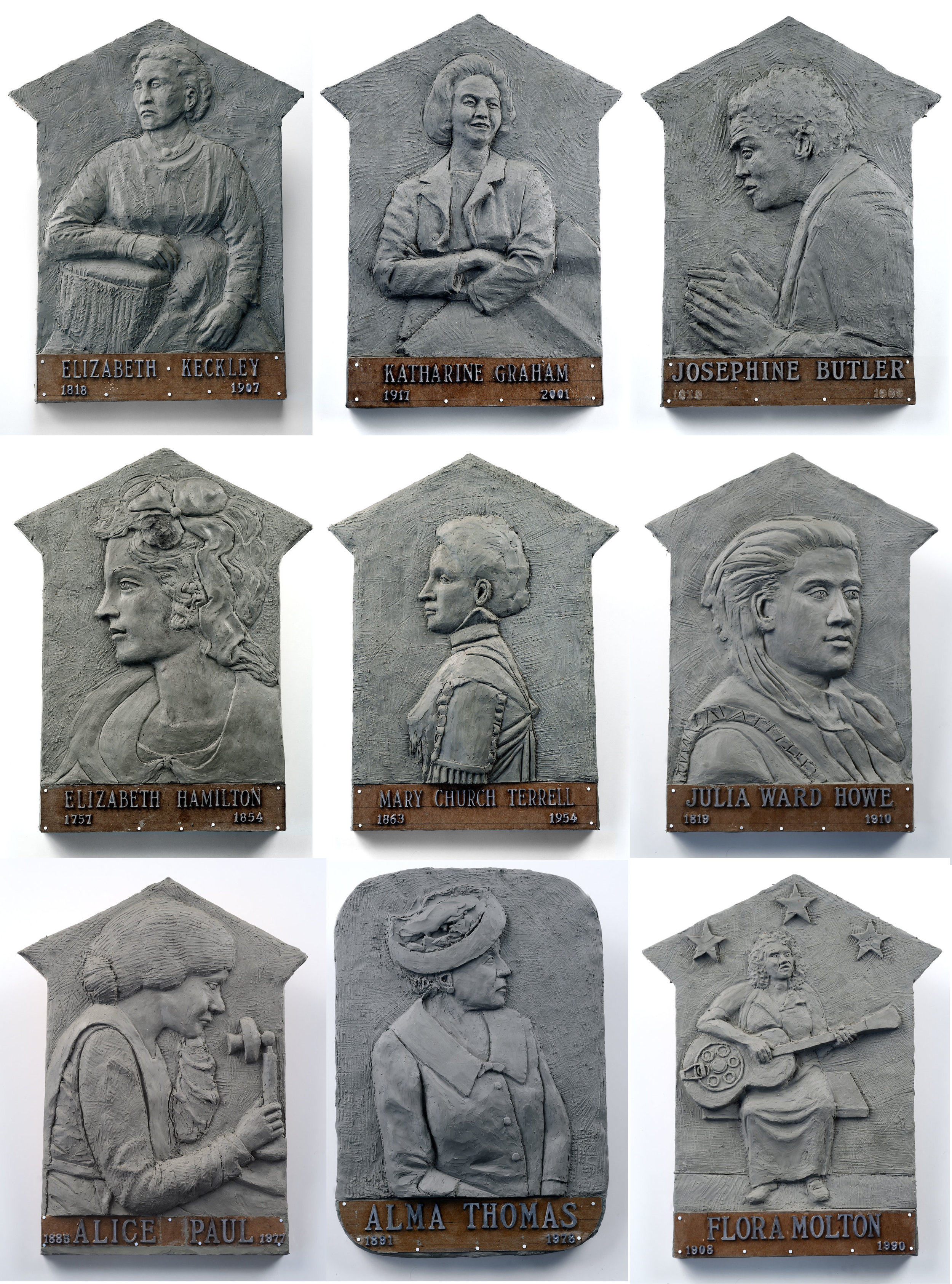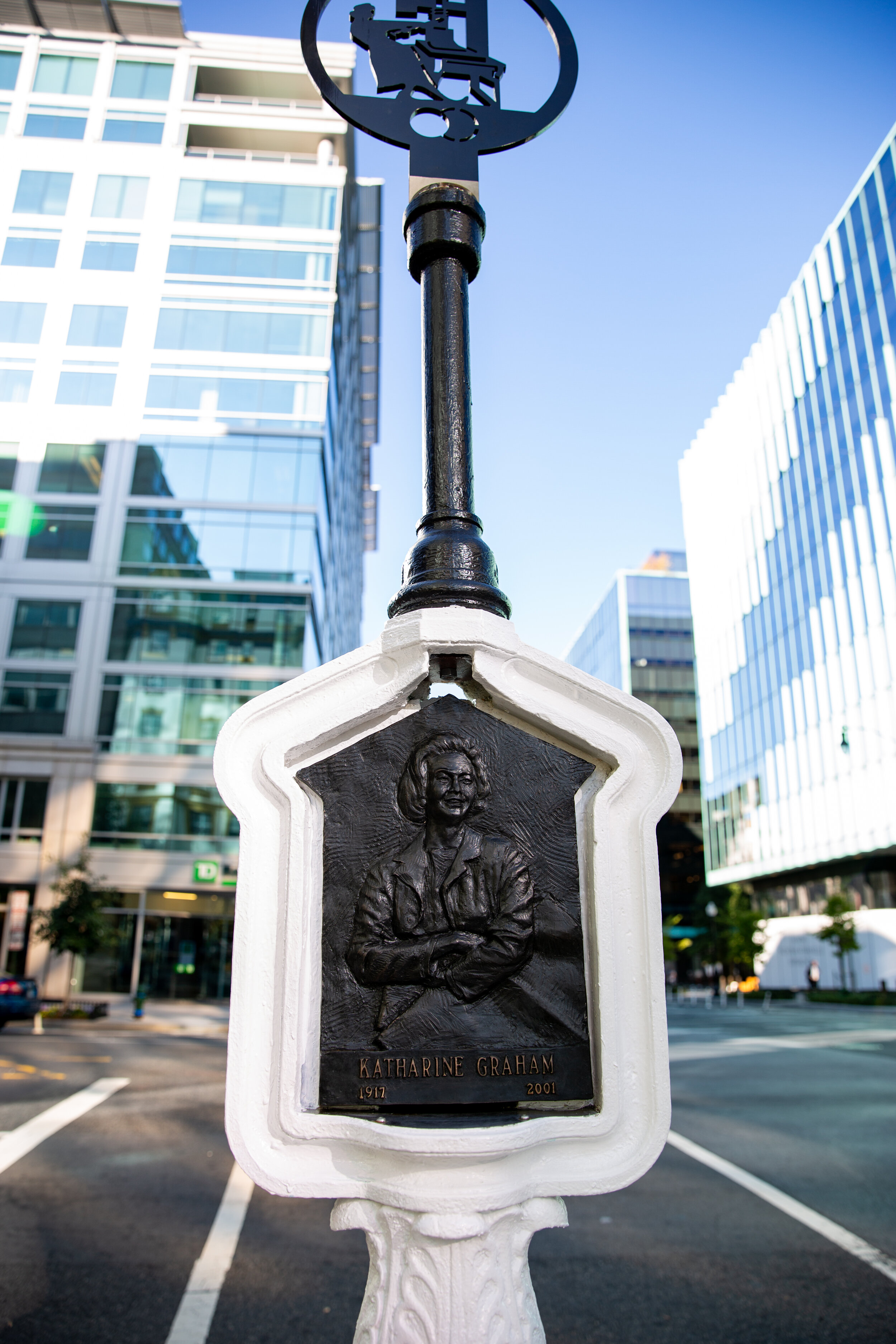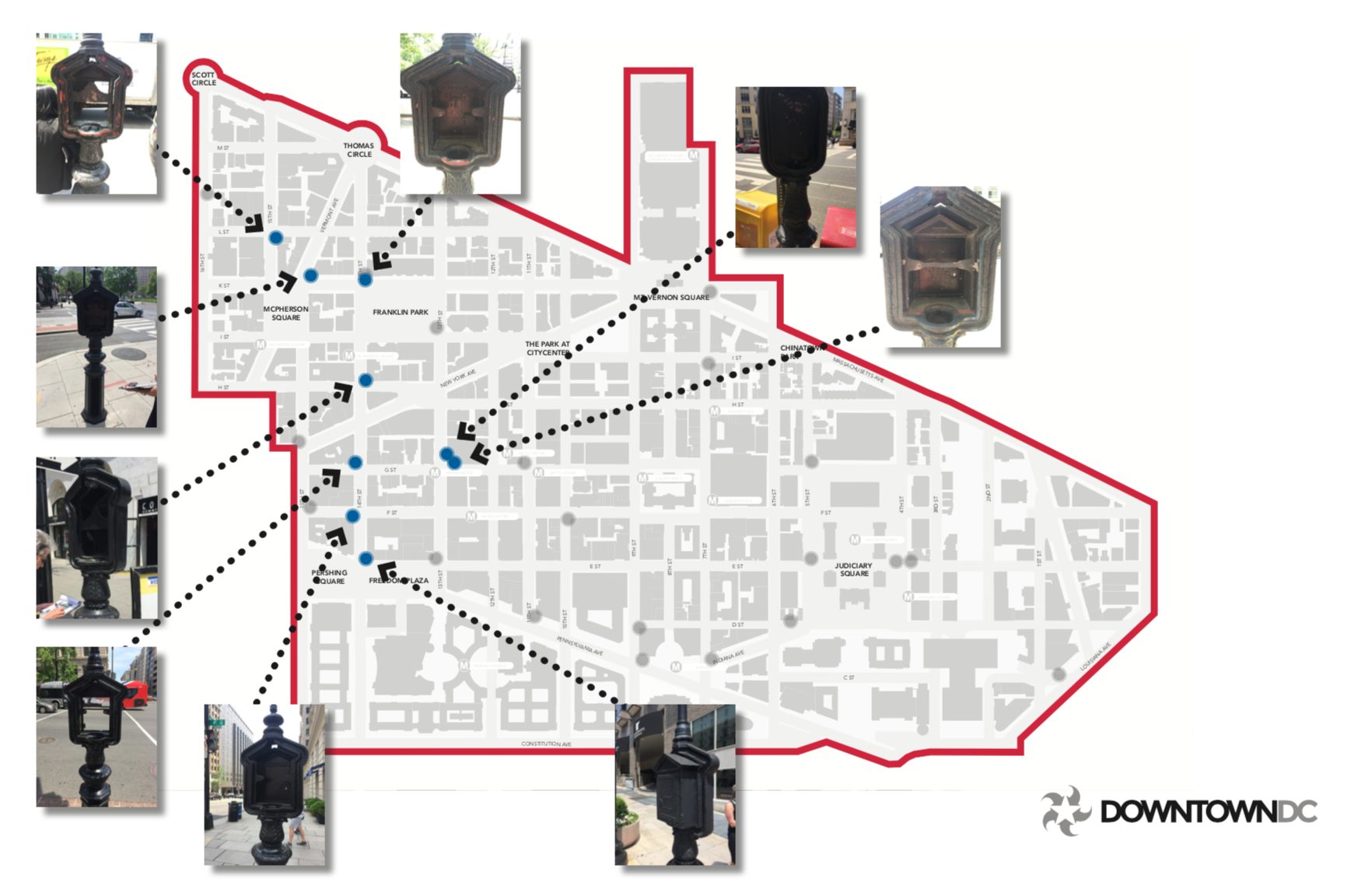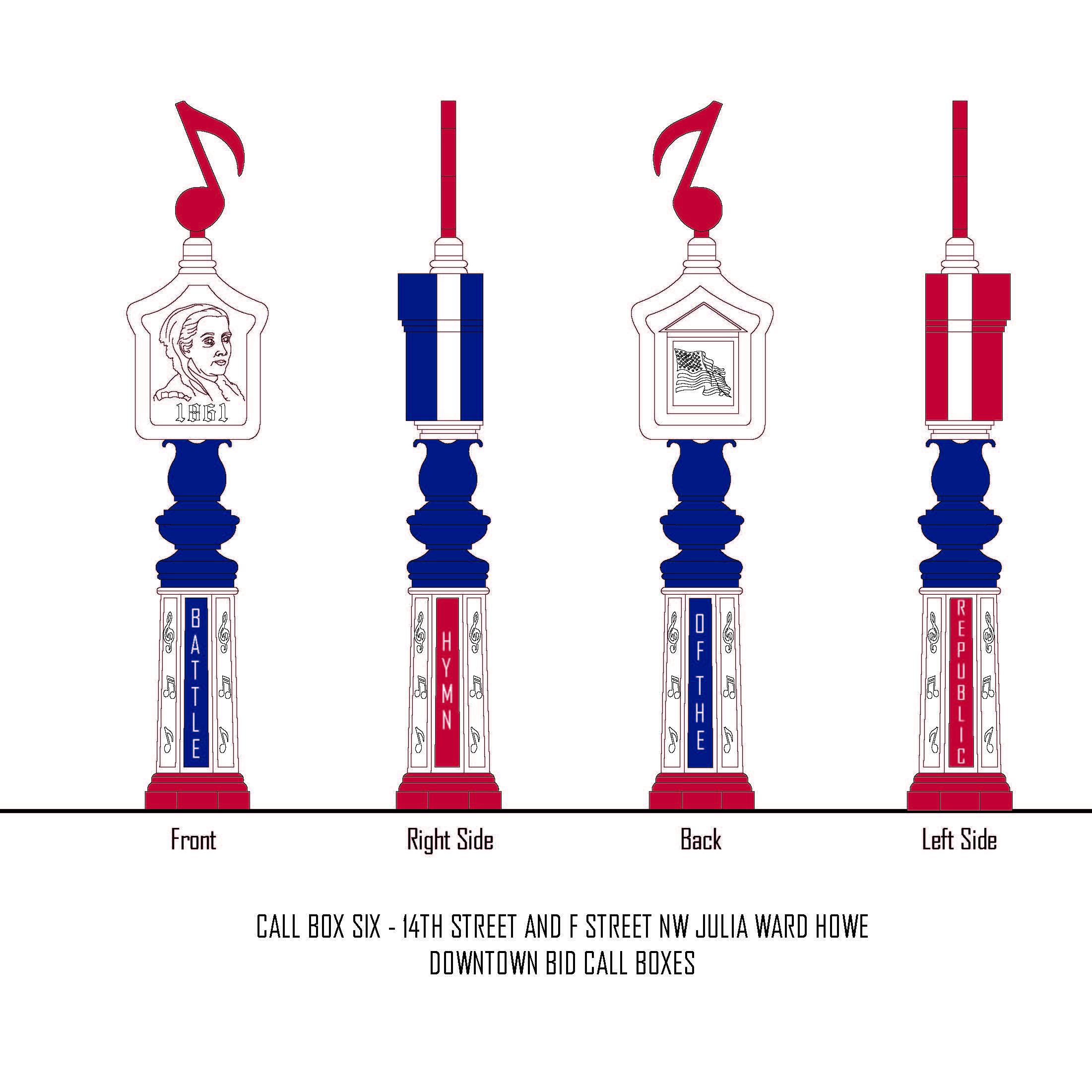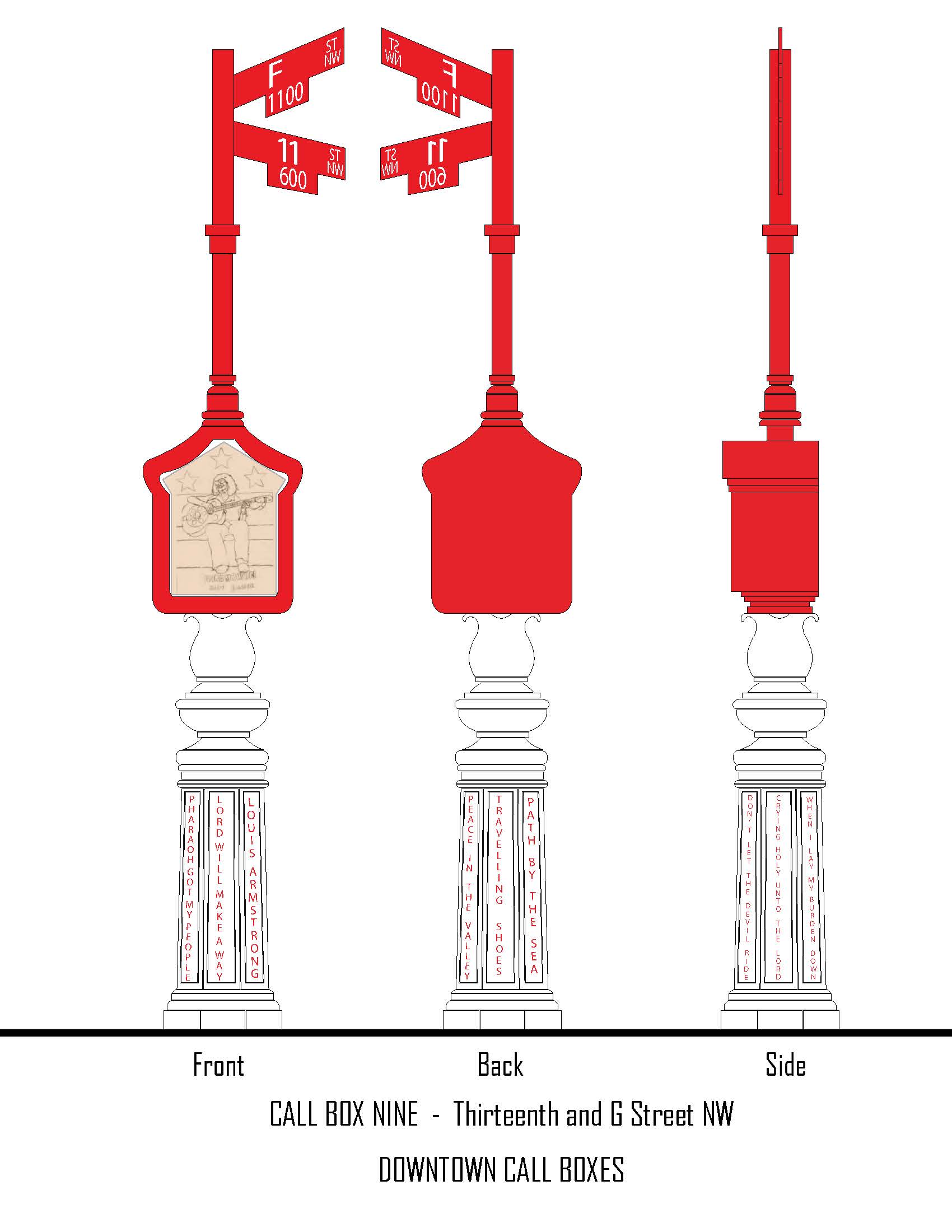Downtown BID Callboxes
NW Washington, DC
October 2018
Bronze Portraits of four African American Women and five Caucasian Women who helped shape Washington, DC. The Artwork is located on nine historic cast iron fire and police callboxes. Charles Bergen Studios was selected by the Downtown BID in a national artist call to create this artwork. The BID secured matching grant funding from the DCCAH for this $175,000.00 project. In honor of the 100th Anniversary of Woman’s Suffrage in 2020, artwork depicting nine extraordinary women who worked, lived, and were associated with the locations of the Callboxes will be created. Bronze relief portraits of nine women as well as painted stainless steel which has been water-jet cut, with painted stenciled words on the Callboxes symbolizing their achievements, talents, and organizations.
Click here to view more information on this project as well as the walking tour.
-
Bronze and waterjet
-
Participating /Advising Artists Darian Lassiter, Nathan Cousins, Mathew Andrews, Tsahai Pettiford, Amber Logan, Hakeem Olayinka, Aaron Rogers, Brandon, Bailey, Charles Bergen, Elsabe Dixon, Colby Johnson, Sanjaya Wilson, and George Tkabladze.
-
$175,000
-
To download the project sheet, click here.

